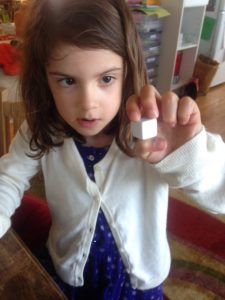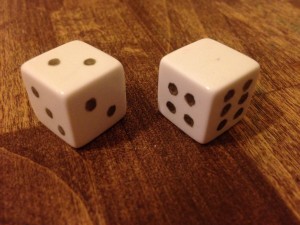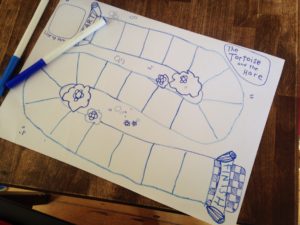The Tortoise and the Hare

As part of her weekly homework, my daughter brings home a board game from school. She’s 5 years old, “Year 1” in NZ parlance. The games tend to be designed along whatever lines they’re teaching at school – usually simple math – and themed almost at random (“this game is about fish! Help the fish count and get him to score the winning try!”). We all get together and play them in good sport, although I do try to resist the urge to explain Markov Chains to her. That can wait.
But it did get me wanting to design a game with my two daughters. So I pitched that we spend an afternoon or two doing exactly that, and they were game for it. Days before I had told them the story of the Tortoise and the Hare, and it seemed a good starting point: the race provided a linear A to B structure that would fit in with their other homework boardgame designs. So we chatted about how the tortoise moved, and how the hare moved. They liked rolling dice, so it seemed fitting to do that. I first showed them different types of dice, and how a d4 has a different movement than a d12. We tried a couple of tests with these, but it just meant the hare pretty much always won. Next I showed them some blank dice, and we decided to use those. Because you can draw on them.

We chatted about different die pip values and frequency, and how you can change the movement of a die. We went to AnyDice and saw some charts, which they enjoyed a lot more than I was expecting.

We ended up with a pretty good balance of numbers. The one thing was the blank sides for the Hare. We wanted to have the Hare stop along the way, and had tried using “must stop” locations on the board, but that seemed to have a predictability that wasn’t desireable. The blank die sides are effectively a “miss a turn” roll, which is often bad game design, but it matched the metaphor so well we kept them. We did have to do more balancing later, but more on that later. The next step was the board. James Ernest has a great essay on volatility, including a section on the game “Kill the Elf”. In this game, the number of spaces in the race is effectively the hit points of the elf, and the tortoise the warrior and the hare the wizard. Too few spaces in the race, and the hare wins more frequently. Too many, and the tortoise has the advantage.
|
|
|
|---|---|---|
Board version 1 | Board version 2 | Playtesting |
The girls were up for several rounds of playtesting. They definitely preferred to play the tortoise, but the hare won just as many games.
The game made it to school. The homeroom teacher took a look, and sent it back home with a note that there were “too many blank sides” to the hare die. It’s always good to get external testing.



